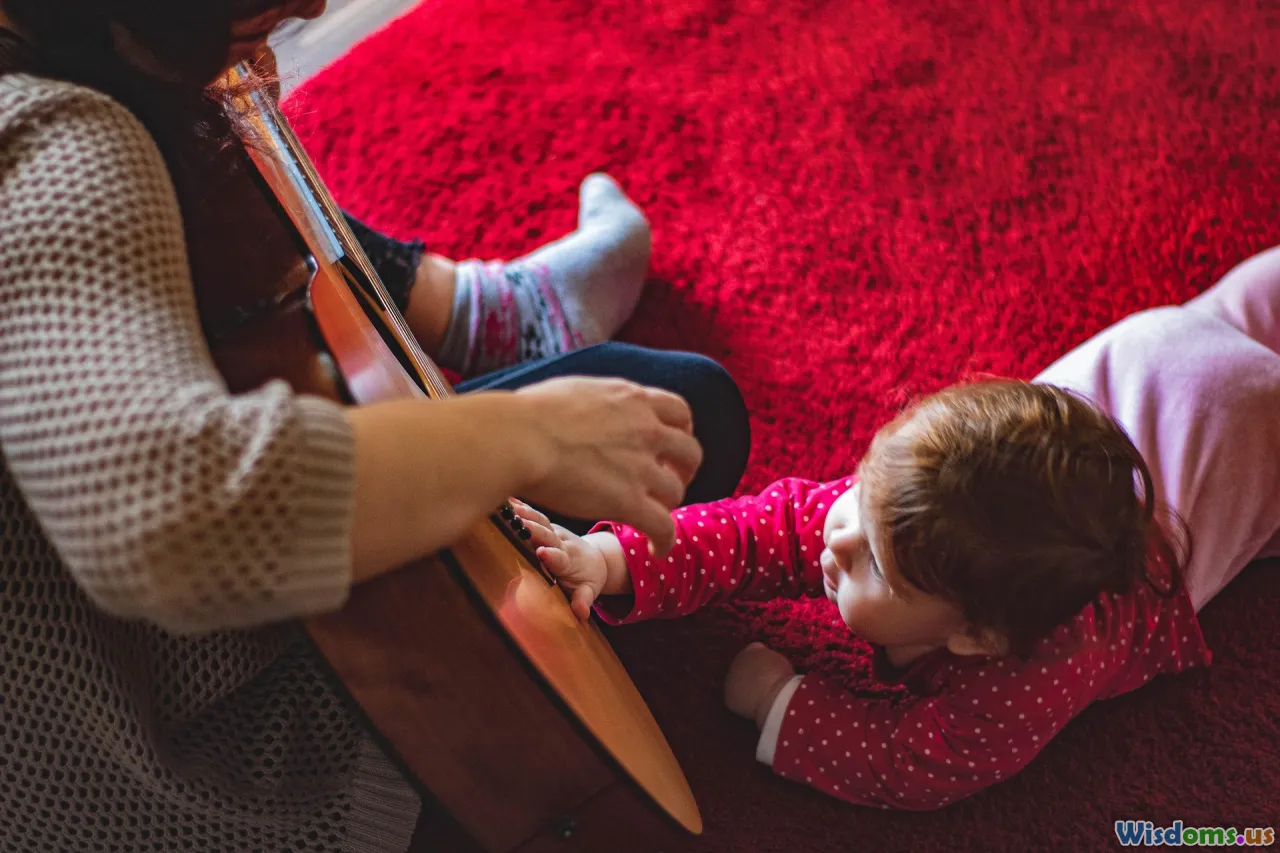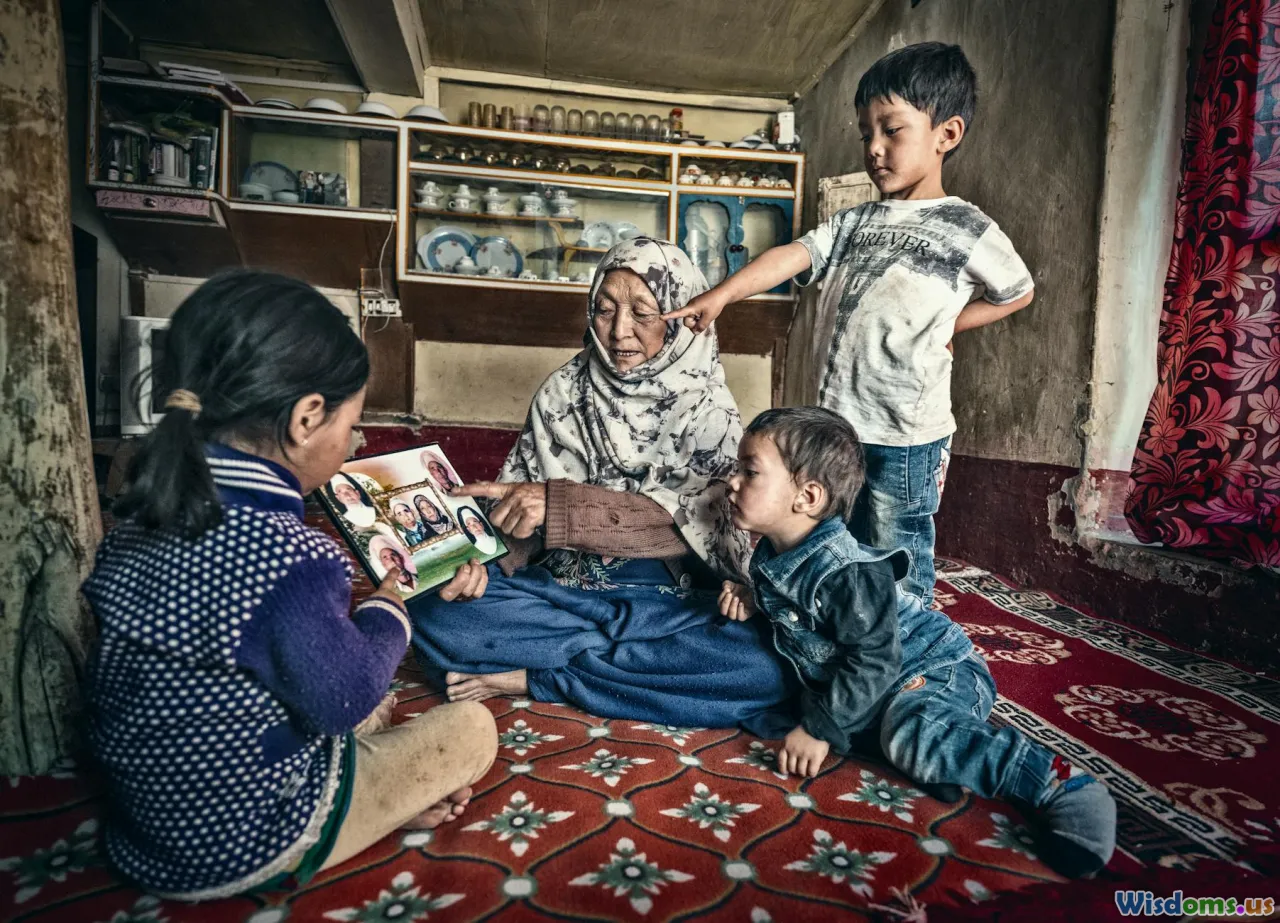
What Happens If Children Lack Language Input
15 min read Explore the developmental impacts when children experience insufficient language input, including cognitive, social, and emotional consequences. (0 Reviews)
What Happens If Children Lack Language Input
Human language is a defining aspect of our experience. Through words and sentences, we understand the world, share our thoughts, and connect with each other. But what if, during childhood—the most critical period for language learning—children are deprived of substantial language input? The answer goes far beyond delayed speech. As we'll see, limited language exposure early in life can profoundly impact a child's cognitive, social, and emotional development. This article explores the consequences, real-world examples, and what parents, caregivers, and educators can do to support robust language growth.
The Early Years: Why Language Input Matters

From birth, children's brains are hardwired to absorb language. During the first three years of life—the so-called "critical period"—neural connections are rapidly forged in response to the speech and sounds babies hear every day. Linguist Noam Chomsky popularized the idea that humans are born with a predisposition to learn language, but access to real, meaningful input is essential.
A landmark 1995 study by Betty Hart and Todd Risley tracked language exposure in American households. They discovered children from higher-verbal, professional families heard 30 million more words by age three than those from lower-verbal, working-class families—the famous "30 Million Word Gap." These early disparities lead to differences in vocabulary at age three and persist into school readiness and academic achievement.
But the implications stretch further. If a child receives almost no language input—due to social isolation, neglect, or extreme circumstances—the consequences can be tragic and lifelong.
Cognitive Development: More Than Just Words

Language is not just a tool for communication; it is foundational for cognitive development. Neuroscientific research shows children use language to categorize objects, remember events, and solve problems. Having access to a rich language environment boosts reasoning, memory, and executive function.
When children receive very little spoken language, areas of their brains that process language (like Broca's and Wernicke's areas) may not develop fully. Studies using MRI scans reveal that children with severe language deprivation exhibit less gray matter density and weaker neural connectivity in these regions.
Consider the tragic case of Genie, the "feral child" discovered in California in 1970. Isolated and deprived of meaningful conversation until age 13, Genie never developed normal grammar skills, despite intensive intervention. Her story, while unique, underscores a broad truth: cognitive functions like abstract reasoning, planning, and even understanding others’ perspectives are supported and constrained by the language we learn as children.
Social and Emotional Impact

Language is central to forming relationships and managing emotions. Imagine trying to make friends, express frustration, or seek comfort without adequate words. Children who lack input miss these essential social tools:
- Delayed social understanding: Language-deprived kids may struggle to interpret facial expressions or infer others’ intentions, impeding the development of empathy.
- Behavioral challenges: Without the means to verbalize needs, they're more vulnerable to frustration, acting out, or withdrawal.
- Isolation: Communication limitations breed bewilderment and exclusion, leading to lowered self-esteem and, in some cases, long-term social apathy.
A 2012 study by psychologist Anne Fernald and colleagues found that gaps in spoken language influence social behaviors as early as 18 months. Children with greater exposure tended to be more socially competent and confident.
Case Studies: Lessons from the Real World

Throughout history, rare, heartbreaking incidents have allowed scientists to observe the consequences of severe language deprivation. These examples serve as warnings, emphasizing the indispensable role of social interaction and communication.
Genie (USA, 1970s): Isolated in a small room from toddlerhood until age 13, Genie was never spoken to. She eventually acquired a large vocabulary but could not grasp grammar, such as verb tenses or sentence structure. Despite years of language teaching, her abilities plateaued early, suggesting a neurological window for full language mastery.
The Wild Boy of Aveyron (France, 1798): Victor, "the feral child," was found after apparently living alone in the wild for much of his childhood. Attempts at education gave minimal results. Victor learned a few words but never conversational language, also showing emotional disconnection and limited social understanding.
Romanian Orphans (1980-90s): Political policies led to the abandonment of thousands of children in orphanages, many confined to cribs with little adult interaction. Longitudinal studies later showed most of these children struggled with grammar, poor peer relationships, and impaired IQ, even years after adoption into nurturing homes.
These cases, though extreme, illustrate universal truths: the brain’s adaptability ("neuroplasticity") is highest in early childhood, and language deprivation hinders emotional, mental, and social development beyond catch-up.
Language Deprivation and Academic Outcomes

The road from early language deprivation to classroom struggles is distressingly direct. When children enter school with limited vocabulary or poor sentence structure, they face challenges in every academic area—not just reading and writing. Here’s how it unfolds:
-
Literacy: Learning to decode words and comprehend text relies on strong oral language foundations. Children who lack early exposure tend to lag in reading fluency by third grade—a gap that predicts future dropout risk.
-
Mathematics: Even math skills are language-dependent. Understanding word problems, following instructions, and articulating reasoning demand a solid command of expressive and receptive language.
-
Science and Social Studies: Asking and answering questions, organizing information, and engaging in discussion hinge on language skills. Teachers cite limited vocabulary as a consistent barrier to participation and understanding.
According to a 2019 National Assessment of Educational Progress (NAEP) report, U.S. students who entered kindergarten with poorer language skills were three times more likely to score "below basic" in reading and math at grade four.
Impacts on Multilingual and Sign Language Learners

While much research focuses on spoken English, findings extend to all languages—including signed ones. Children born deaf, for instance, can be uniquely vulnerable to language deprivation, especially if parents delay exposing them to sign language.
Deaf Children and Language Input: A seminal 2010 study by Rachel Mayberry showed that deaf adults who didn't learn any structured language (spoken or signed) until age six or later had persistent deficits in fluency, memory for sentences, and even cognitive flexibility. In contrast, deaf children who acquired American Sign Language (ASL) from birth performed on par with hearing peers in cognitive tasks.
Similarly, for children in bilingual environments, research highlights that fluency in any language—whether home or society language—is protective, provided there's consistent, rich exposure. Growing up multilingual is not a cause for deprivation as long as children regularly interact in either language.
Nurturing Robust Language Environments: Tips and Strategies

Given what’s at stake, what can caregivers and communities do to ensure children receive the language nourishment they need? Here are practical, proven strategies:
1. Talk Early, Talk Often
Start conversing with children from birth. Narrate daily routines, describe objects, ask questions, and respond to coos and sounds—they all help. It's the quality of interaction, not expensive toys or tools, that delivers results.
2. Read Aloud Every Day
Reading together exposes children to richer, more varied vocabulary and sentence structures. Choose books with rhyme, repetition, or interesting visuals to keep little ones engaged. Encourage discussions about stories—"What do you think happens next?"
3. Play-Based Interaction
Pretend play helps children use language creatively. Role-playing, puppet shows, or storytelling exercises build narrative thinking and communication skills.
4. Model Emotional Expression
Teach children to label emotions ("I see you're frustrated"). Encourage them to use words to express desires and feelings, reducing behavioral outbursts and helping social growth.
5. Limit Passive Screen Time
Television or tablet time, without interaction, doesn't substitute for real conversation. The American Academy of Pediatrics recommends prioritizing live, responsive exchanges—video chats with distant relatives, for example—over passive viewing.
6. Expose to Multiple Languages, if Possible
If you're raising a bilingual child, provide ample opportunities to hear and use both languages in natural settings. Let them interact with family, community, and native speakers through games and storytelling.
7. Early Intervention if Delays Appear
If a child is not meeting typical language milestones, consult a pediatrician or speech-language specialist. Early, targeted support vastly improves long-term outcomes.
Societal Role: Protecting the Right to Language

Ensuring every child receives adequate language input is more than a parenting responsibility—it's a societal mandate. Pediatricians, educators, and policymakers play vital roles:
- Universal screening for developmental delays at health visits can flag risks early.
- Promoting language-rich daycares and preschools, especially in underserved areas.
- Championing policies that support paid parental leave and family time, so infants and toddlers don't languish in silent environments during key years.
- Funding programs like "Reach Out and Read," which equip families with books and literacy coaching.
Globally, organizations such as UNICEF have emphasized language exposure as a child’s right, vital not just for learning but for the long-term health of children and societies.
Final Thoughts: Language Is the Scaffold of Life

Children who lack language input experience more than delayed speech—they face lifelong consequences in cognitive growth, academic performance, social relationships, and emotional regulatory skills. While true deprivation is rare, too many children today—due to neglect, poverty, disability, or systemic inequities—aren’t hearing enough words or engaging in meaningful conversation.
But the path is clear: engaging early and often, reading together, and fostering play and emotional openness gives every child a fighting chance to thrive. For parents, educators, and policymakers, recognizing and acting on the central role of language makes all the difference. The words we share with children today truly shape the adults they become.
Rate the Post
User Reviews
Popular Posts


















